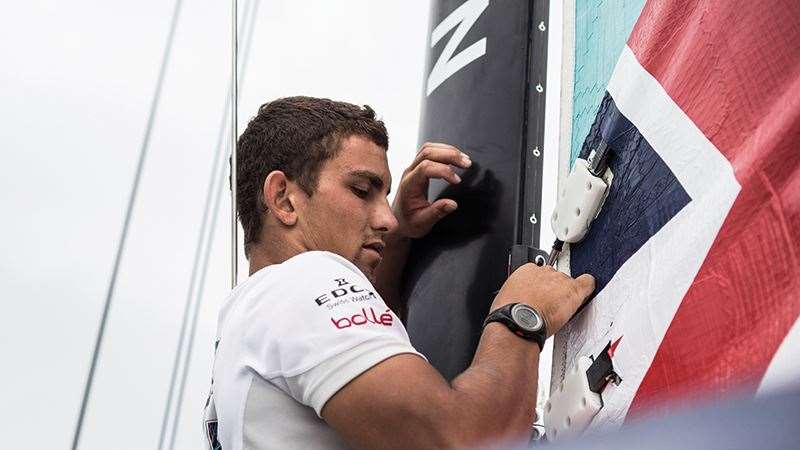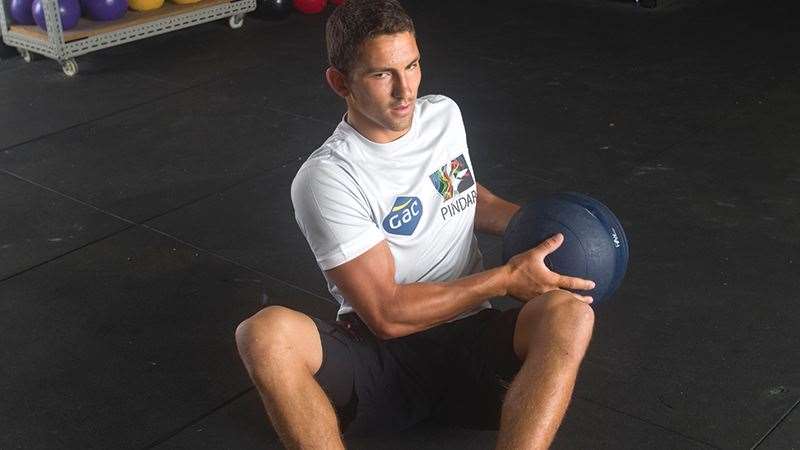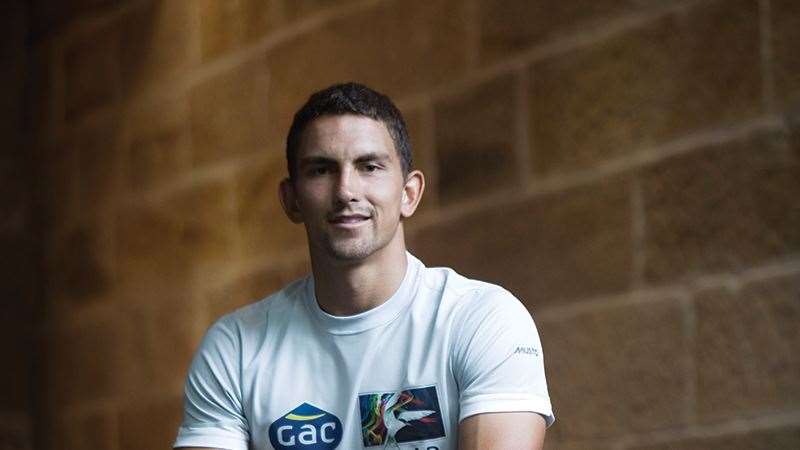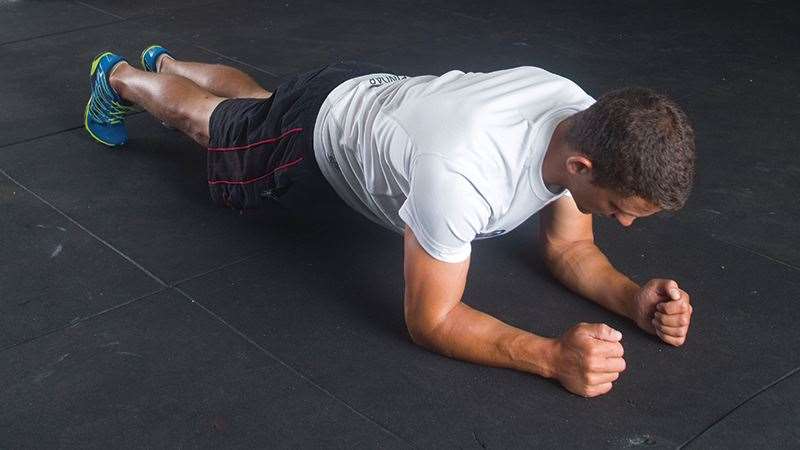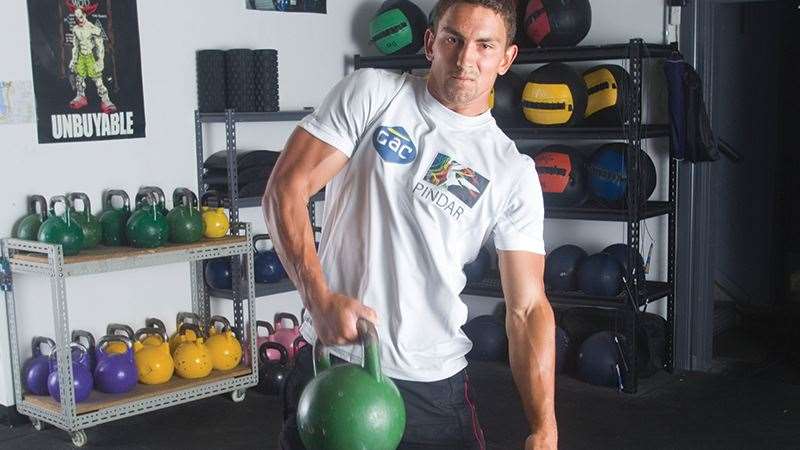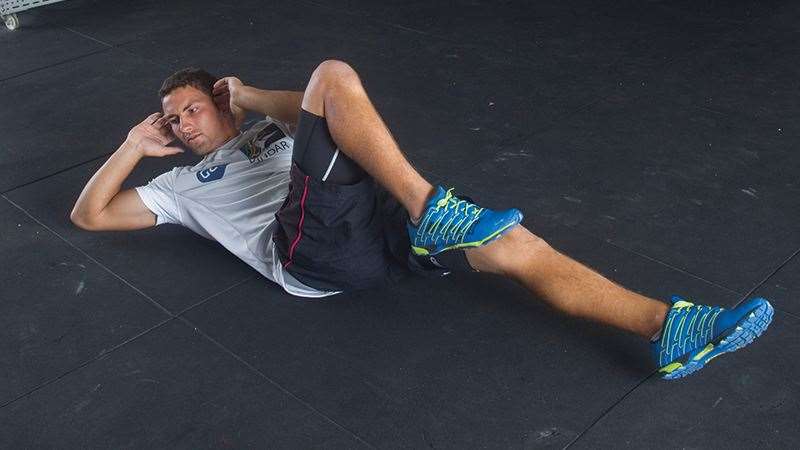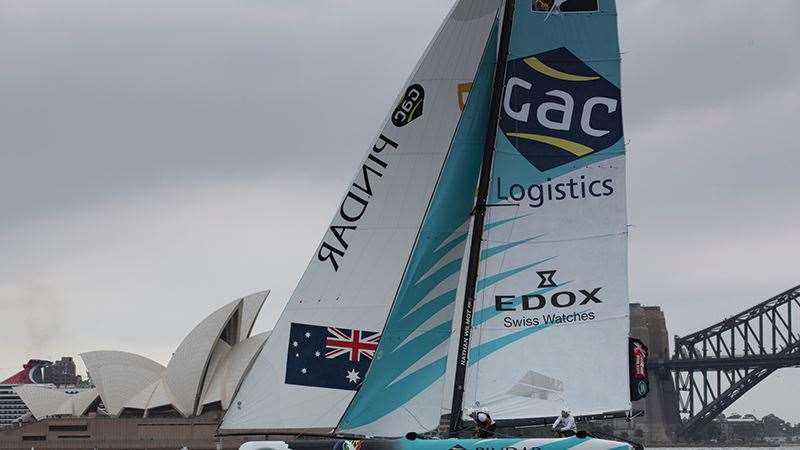This young Victorian represents the new breed: he's ultra-competitive, ultra-ambitious and ultra-fit.
With our gold medal haul at the last Olympics and the success of various Aussies in the last America’s Cup, it’s fair to say Australia is blessed with a flotilla of worldbeating sailing talent at the moment. But there is more good news: a sizeable armada of youngsters follows in their wake. Among them, James Wierzbowski, a name to file away for the future. There are big tickets on this young Victorian, who represents the new breed – ultra competitive, ultra ambitious and ultra fit. He’s a catamaran specialist – which wouldn’t have done him much good if he’d been peaking for London in 2012; the Olympic twin-hull class, the Tornadoes, was controversially dropped. But cats make their comeback in Rio in 2016, with a new class making its debut there, the Nacra 17. While Wierzbowski has just missed out on a ride there (he’s been drafted into the 49er skiffs), he’s currently competing for the GAC-Pindar team in the Extreme Sailing Series (ESS), the awesome ten-strong fleet of mega-cats travelling the world bringing a whole new experience to sailing spectators – as seen on Sydney Harbour last December.
He has certainly earned his spot on the crew. He has won national and international titles and was invited to sail on the Objective Australia team for the Red Bull Youth America’s Cup in 2013 on the AC45. The year ahead will see him travelling the globe switching between the Extreme 40s and 49er regattas as he races for a spot in the 2016 Olympics. But as he says, “I’m also thinking about 2020. I’m only 23. I’m looking quite far ahead.”
BEGINNINGS
“I’m from the Mornington Peninsula – actually Western Port Bay, a little town called Merricks Beach. It’s quite sedate there – just countryside and the beach. My Dad got me into sailing: he was always a catamaran sailor, and ever since I was a little kid he would take me for rides. He trained me up until I was 13 or 14; then from the ages of 14 and 15 I moved through the youth classes and eventually was sailing on my own catamaran, a Hobie 16. I had a bit of success and got the taste for it and it just snowballed from there. At 17 or 18 I was doing quite well at national titles and starting to travel around a bit; then, once I was over 18, I started travelling internationally.”
TWO HULLS ARE BETTER
“I’ve always competed in catamarans. There’s something about going fast on the water ... In the boats I sail we have this thing called a trapeze, where you hang out over the side on a wire. That feeling of flying one hull above the water, that extra speed ... You’re on the very edge of crashing or glory.
“Everything happens faster on a catamaran. And things go wrong faster, as well. If you’re not onto it you’ll pay the consequences. I’ve had no shortage of big crashes – that’s all part of it. In this sport you’re always rewarded if you push it, but you have to know where the limit is. Obviously in training you have to push past the limit to find where it is; this way on race day you can go exactly as hard as you need to without crashing. Hopefully ...
“In training mode I’d spend 20-plus hours on the water each week. In the Extreme Sailing Series my role is bowman. I’m moving around the boat all the time and doing a lot of the physical work. You have to think on your feet a lot – you have to know who to back up and who to help while getting all your own jobs done at the same time. Our racing is so fast and we do so many manoeuvres that everything is just free-thinking in each situation. It’s a very large, physical role but you have to think as fast as you move.”
EXTREMITIES
“We call this Extreme Sailing Series ‘stadium racing’. It’s like taking Formula One cars and putting them on a go-kart track. You go just as fast as the fastest boats, but you’ve got to turn many more corners much more quickly. You still hit your top speeds, but almost as soon as you do, you’ve got to change direction again. With so many boats around you, you can come into a situation where you don’t know where you’re going until the very last second.
“You could say that catamarans demand a superior level of fitness to other types of sailing. And this Extreme Sailing class definitely requires a generally higher level of fitness and different skill set to most of the other traditional types of sailing.”
CROSSFIT
“When I transitioned out of the youth classes, I really got into my fitness. That was when I stumbled across the CrossFit training set-up at Mornington, near where I live. As soon as I tried it I knew right away that it was perfect for sailing.
“There’s two reasons for that: it’s the ability to get work done while under stress or fatigue – the fact that you can’t just stop when you’re tired. You have to push through that. That’s } one aspect that is absolutely crucial to sailing and especially this Extreme Sailing Series. The other aspect is mental toughness: every day that you train in CrossFit you are challenged mentally; you’ve got to keep pushing harder to finish the work as fast as you can. It builds mental toughness, which relates perfectly to on-the-water: you can’t just stop – you’ve got to be ready to push harder and harder. Knowing that you’ve pushed yourself hard before in training and got through really helps in our racing.
“The CrossFit concept of the Workout Of The Day is really suitable: not being able to pick and choose what you have to do. You have to be able to adapt, and it forces you to train at things that you’re not so good at. Through the CrossFit training program you end up as a totally fit person – you’re not, say, stronger in your upper body than your legs. Everything gets worked evenly. On the boat we need to have great balance, we need speed and power and agility, and we need endurance. Not being locked down in a certain type of training is perfect for sailing.
“Through my high school years I was training in a normal gym with what I guess you’d say is a ‘normal’ strength program. But I definitely felt the difference in my sailing when I changed to the CrossFit mentality. I noticed a very big difference in my base fitness, as well as all aspects of how hard I could push on the day.
“You’ve got a coach who is at times quite in your face – especially in my gym. But I’ve got a great relationship with my coach, Sonia, and I know she’s not going to let me slack off. She keeps me pushing as hard as I can go. And she keeps an eye on my form and technique to make sure I’m not at risk of injury. Which is a big part: they know I’m training for sailing, and being injured would jeopardise that. So that’s a big priority for me as well.
“The gymnastic element is very important in these boats in the Extreme Sailing Series. You can move a lot of load, that’s great. But if you can’t move your own bodyweight, well, that’s not much use. You’ve got to have high power output and lots of strength at times, but you’ve also got to move your body efficiently around the boat – nice and smooth as well. The other part of that is having great balance: if you’re doing a strength element on the boat, then you have to be stable under your feet, because your boat is moving along and it’s up on an angle. So brute force is no good. You can’t fire a cannon out of a canoe.
“It’s about that total fitness – all those components: strength, power, agility, endurance, balance. As well as mental toughness.
“In any race, I’ll usually be working at maximal intensity at least twice. In the CrossFit gym we have a saying: ‘Leave nothing behind.’ You’ve got to give it absolutely everything you’ve got. And that’s what my coach and I make sure happens every day in the gym.
“In the beginning with CrossFit you experience more soreness than with usual training – that’s certain. But once your body adapts to the loads you put it under, and you get to the stage where you can train one, two, three times per day for four, five or six days a week, you’re not sore. You might be a little tender here or there but your body gets very good at recovery and adapting to the loads you’re putting it under.
“At any leg of the ESS we have four days of racing plus a practice day – so that’s five full days on the water. And we have up to 40 races over the four days; that’s ten races a day. It’s very high-load and you’ve got be able to recreate that in your fitness training.”
BOUNCING BACK
“Ice baths are amazing for recovery when you have access to them. We use them in our Olympic sailing program. But for me it’s usually a good cool-down after work, followed by stretching and then some certain supplements; I’m sponsored by GNC and specifically GNC Frankston. So I make sure I’m well hydrated and taking magnesium after work, as well as protein. Those three things usually get me through.”
DOWN THE HATCH
“As you can guess I use the paleo diet, like most people doing CrossFit. But I’m not strict – maybe 90 percent there. It can be difficult to have a strict paleo regime when you’re travelling with the team, and we spend a lot of time in Europe. If you try to run a strict paleo diet, it means every so often you have to have cheat meals and your body won’t accept it very well. But 90 percent of the time is good for me. The biggest part of it is fresh, high-quality food based around meat, fruit, vegetables, nuts and seeds. That’s the core of it. You cut out sugar and processed food; try to eliminate things in packets. I have five solid meals a day – I need to keep my weight solid. To cope with the training loads, I need a high calorie intake.
“Sometimes things are out of your control, and eating something is better than eating nothing. The team accommodates you where they can, but yeah, sometimes you end up with wraps or sandwiches or something like that.
“We often fly into an event quite late. You go straight to the accommodation, then you’re building the boat, then the day after you’ll be racing. So managing your diet and hydration through long flights is absolutely crucial or it just compounds that jet lag you can get at the other end. I take my own food on a plane – lots of nuts and seeds, that sort of thing. You generally end up just picking and choosing what you can from the airline food. The biggest thing for me on the plane is hydration – that’s my main focus. I take supplements like Endura, or you can get tablets that have salts and minerals which help the absorption of water. You’ve got to be really hydrated days before you get on so that you’re hydrated for the days when you get off.
“I drink a few litres of water every day. On race days we focus a lot on liquid absorption, but then we use energy gels for our carbohydrate intake during the racing so we have lots of energy for that short period of time.”
HEROES
“Jimmy Spithill would be my greatest sailing inspiration. The way he handled himself and led the Oracle Team USA to win the last America’s Cup was very cool to watch, very inspiring. In fact, the whole Oracle team used the CrossFit regime, and they won the America’s Cup.”
‒ Graem Sims
Follow James on Instagram @thesailorslife
Related Articles
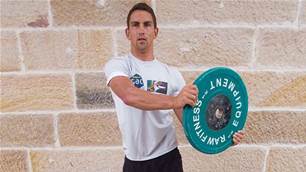
Sailor James Wierzbowski
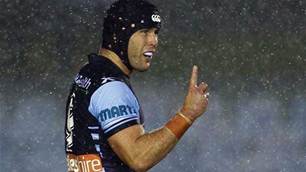
Training with the Cronulla Sharks' Michael Ennis


